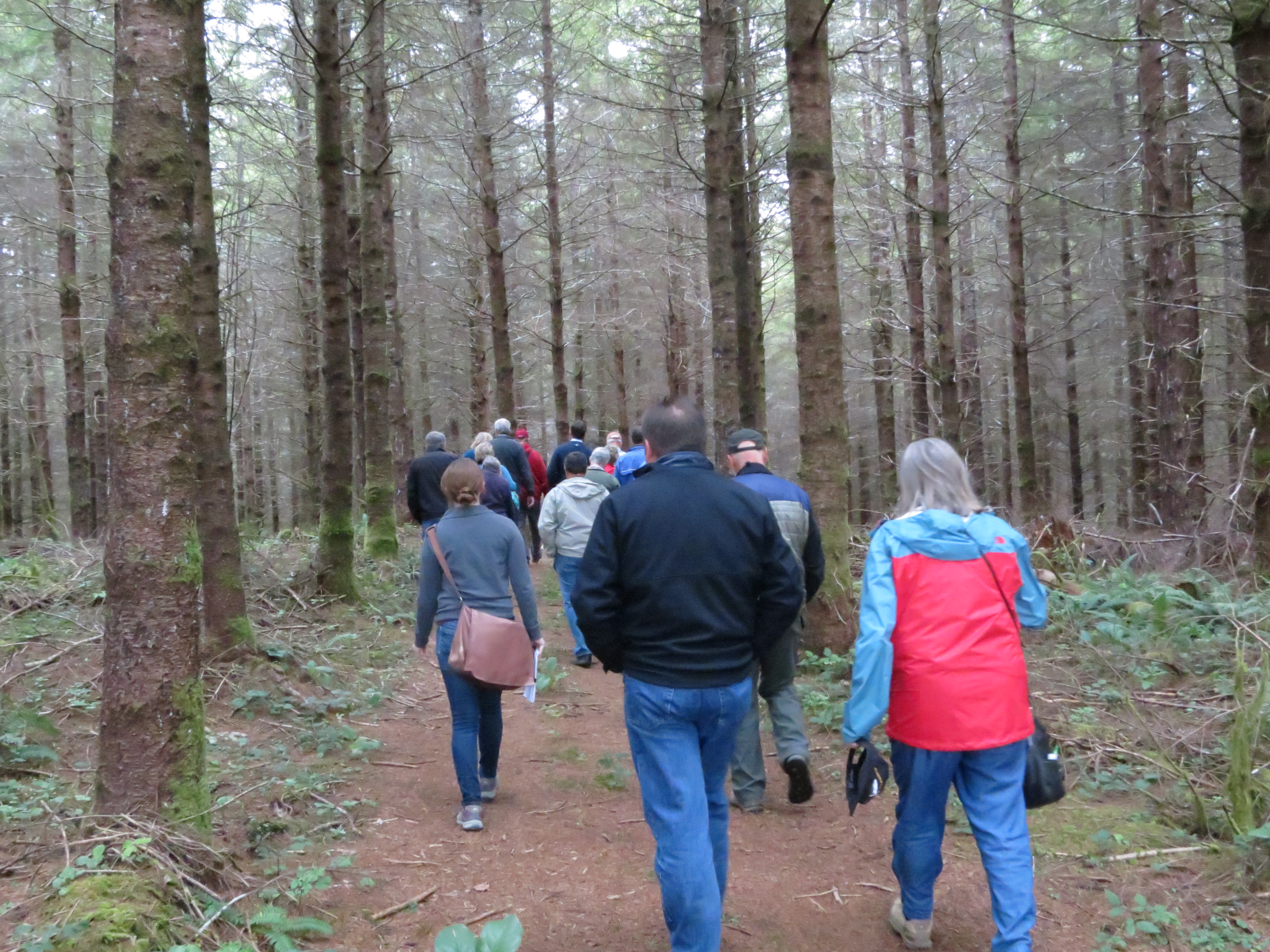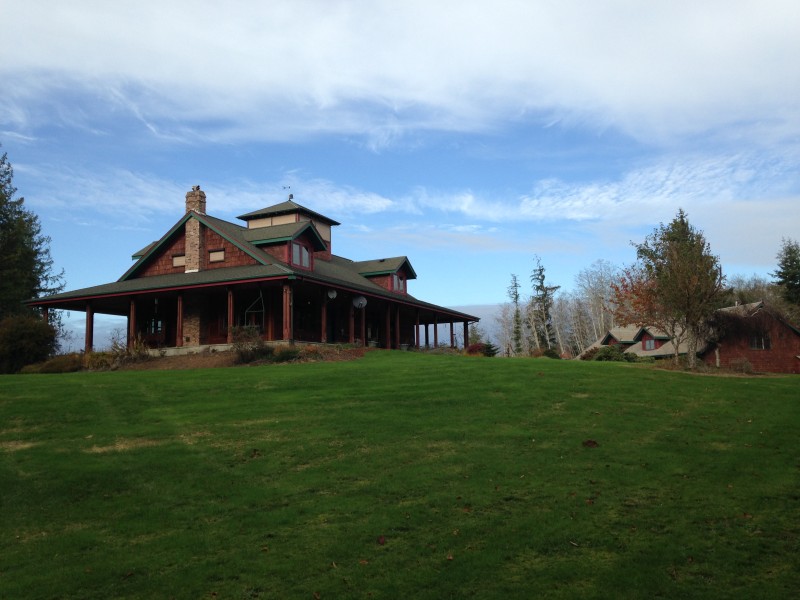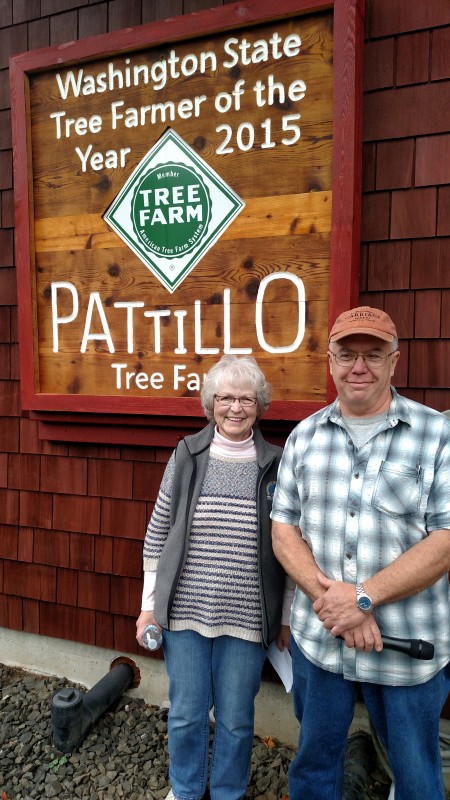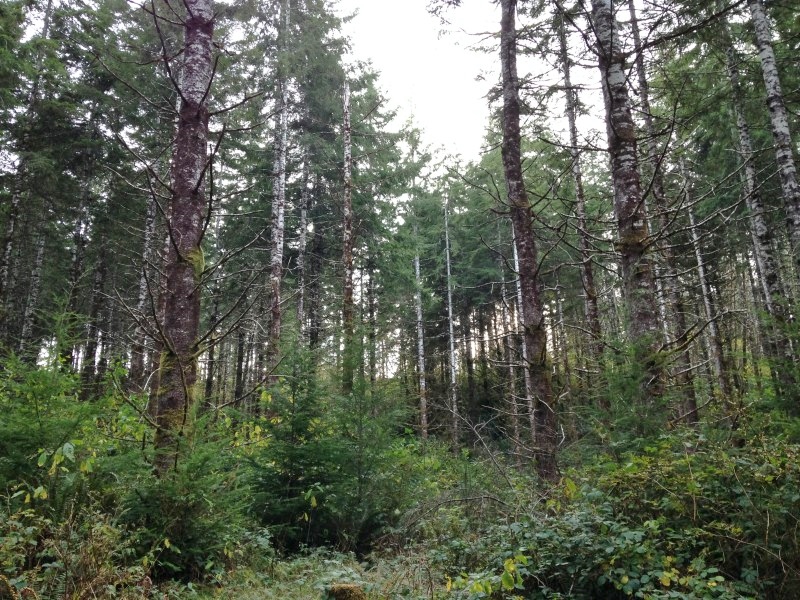Greg and Sue Pattillo from Washington

What makes them outstanding?
Greg, a forester, and Sue, a high school librarian, purchased their first acres of timberland in the 1970s. Over the last 30 years, the Pattillos have been managing their forest sustainably to support their tree farm, and have protected 27 contiguous parcels from being chewed up by suburban development. The main portion of the Tree Farm is within 3 miles of Raymond, well within the urban interface. Greg likes to remind folks of his favorite Patrick Moore quote, "The most poisonous thing you can put on earth is asphalt."The Pattillo Tree Farm is a full time job for Greg and Sue. They lovingly manage every acre of the forest while providing great habitat for fish and wildlife. The Pattillos have shared their conservation spirit and knowledge with folks far and near. Professionals, students, landowners, and politicians have visited the Pattillo Tree Farm and every visitor falls in love with the work of Greg and Sue. Their work is infectious. Washington state is truly blessed to have landowners like Greg & Sue, who have worked four decades to protect and share their tree farm for all of us.
Tree Farmer Story
 The tree farm is owned by Gregory and Susan Pattillo. Gregory has a BS in Forest Management from Humboldt State University, 1970. Susan has a MLS degree in Library Science from the University of Oregon in 1974. We were married in 1974, and planned early on to accumulate enough timberland to live on, and make a full living from. After working in our respective fields for almost 20 years, we were able to find high site index land at reasonable prices in Pacific County, Washington, in the late 1980s.Our first timberland purchases were in the 1970s: a 30 acre piece in Thurston County and a 22 acre piece in Lewis County from Susan's family, both of which we have sold by now, but they provided some great hands on experience for our later endeavors.Our first 150 acre piece In Pacific County was in 1986 from an absentee owner from whom we got a good buy. This was a mixed species 70 year old stand, which we gradually logged and replanted all the way to 2010. It provided much of our income to live on and expand the tree farm. Our next 300 acres was from a Federal Land Bank foreclosure on Mayr Brothers Timber Company in early 1987. It was a very good buy with about 20 acres of large merchantable timber, and the remainder was well stocked with 5 to 20 Douglas-fir plantations.
The tree farm is owned by Gregory and Susan Pattillo. Gregory has a BS in Forest Management from Humboldt State University, 1970. Susan has a MLS degree in Library Science from the University of Oregon in 1974. We were married in 1974, and planned early on to accumulate enough timberland to live on, and make a full living from. After working in our respective fields for almost 20 years, we were able to find high site index land at reasonable prices in Pacific County, Washington, in the late 1980s.Our first timberland purchases were in the 1970s: a 30 acre piece in Thurston County and a 22 acre piece in Lewis County from Susan's family, both of which we have sold by now, but they provided some great hands on experience for our later endeavors.Our first 150 acre piece In Pacific County was in 1986 from an absentee owner from whom we got a good buy. This was a mixed species 70 year old stand, which we gradually logged and replanted all the way to 2010. It provided much of our income to live on and expand the tree farm. Our next 300 acres was from a Federal Land Bank foreclosure on Mayr Brothers Timber Company in early 1987. It was a very good buy with about 20 acres of large merchantable timber, and the remainder was well stocked with 5 to 20 Douglas-fir plantations.
From this 450 acre core, we have added numerous adjacent pieces which have come up for sale, to bring our present total to just over 700 acres.We did our own building and completed our shop and storage buildings, plus our home by 1995, where we live today.Our tree farm is run as a business, and some harvest has occurred almost every year since we have owned it. Our total harvest amounts to over 2100 truckloads or 7MM board feet. Even-aged harvest was done by Greg Pattillo, Bridgewater Logging and Colburn Logging. Commercial thinning was done by Greg Pattillo, Dave Moore, Ken Wilson and Tom Fox. Pre-commercial thinning was done by Greg Pattillo, RaulMendoza, and Ron Smith.Forest Management Goals; as you have read, Greg & Sue did not inherit their tree farm, nor the money to run it. We bought it piece by piece with the salaries of an industry forester and a high school librarian. I make this point because it has to be managed for a profit in our case in order for us to keep it. Although we provide many benefits to the common environment we all share, including open space, air and water, we do not have the means to manage this tree farm simply as a nature preserve. Having said that, we are extremely proud and often surprised by the amazing productivity of this excellent piece of land, which is a result of a combination of very high site index 1 & 11 land and our intensive management style.
As I mentioned in the Property History, this tree farm since we have owned it has yielded over 2100 truckloadsof logs of all descriptions, or more than 7MM board feet. Some might take that to mean that his tree farm is depleted, but nothing could be more incorrect. This tree farm is a mosaic of more than 20 stand types, species and age classes, and the entire place is vibrant with growth. In a few years, if not already, it will exceed in standing volume the 7MM board feet we have removed. It is now our intention to sit back and watch it grow. Read the 20 stand descriptions in this plan and you will see that most even-aged harvests on this tree farm will not take place until the 2030s decade. Now our job is to keep the farm intact and working as a tree farm.The only way a Tree Farm can make its generous contribution to our environment as well as to our economy is by keeping it intact and growing. We cannot stand for any part of our tree farm to be under or overstocked, as we want it all growing at maximum capacity, and this we have some control over. What I may not be able to control is what happens to it after we are gone. Thinking of this place going to small building lots, more roads, with many more people is unacceptable to us. We do not have children, but do have two nieces and two nephews, where there is some glimmer of hope, but not enough interest shown by any at this time. Various land trusts and charitable groups have been discussed, but nothing too exciting yet. We are working on it. The good news is that the trees keep growing.

Wood
A major point made in the History and Management Goals sections of this Application is that wood production is emphasized on the Tree Farm in order for Sue and Greg to be able to devote their time to the tree farm, and not have to seek outside employment over the last 28 years. Our nearly total devotion of time has resulted in a management style that could be described as intensive, but always done with care. The beauty of the tree farm speaks for itself, the wood volume presently standing will soon equal the volume removed since we have owned it. The last two even aged harvests totaling about 50 acres were done in 2011 and 2014, and since then we have sort of stood back and enjoyed watching the trees grow. No substantial harvest is planned for the next 10 years, in which time there will be an enormous increment of wood added thanks to the high site indexes, and all stands being fully stocked and free to grow.
Our tree farm suffered a severe windstorm in December 2007 with just over 120 mph and winds over 60 mph for about 36 hours. Many of our best ridge top commercially thinned stands were severely damaged, with more than a third of the trees being down or heavily leaning. We did a lot of salvage logging in 2008 and 2009, but made a decision to do this salvage very differently than most of the industry operations in the area. We left all healthy Douglas-fir trees standing, and interplanted the holes between with shade tolerant Western Hemlock seedlings. It is very interesting to watch these multi-level stands develop, and if future managers could let it approach old-growth age again, it will be impressive and be top notch wildlife habitat.
Water
The very strict Washington State Forest Practice Rules to which we adhere, along with our own concerns for doing harvests and roads as carefully as possible insure the very best care of our water resources. In 2008, the Natural Resources Conservation Service assisted us with the upgrade of 5 miles in internal logging roads with new cross drains and rock surfacing to reduce sedimentation along waterways.
Wildlife
The forest stands are inherently diverse, in terms of age class and species. This diversity provides habitat for native species, including elk, deer, bear, cougar, and many smaller animals. Resident bird species, including bald eagles and barred owls are present. Seasonally, songbirds and migrants visit. The mosaic of 20 stand types across 700 acres has been great for all wildlife.
Recreation
We welcome visitors, particularly local folks and neighbors, as long as they are careful with garbage and fire. Neighbors are given written permission to hunt on the property. A picnic area/campground is maintained for use by us and others.


